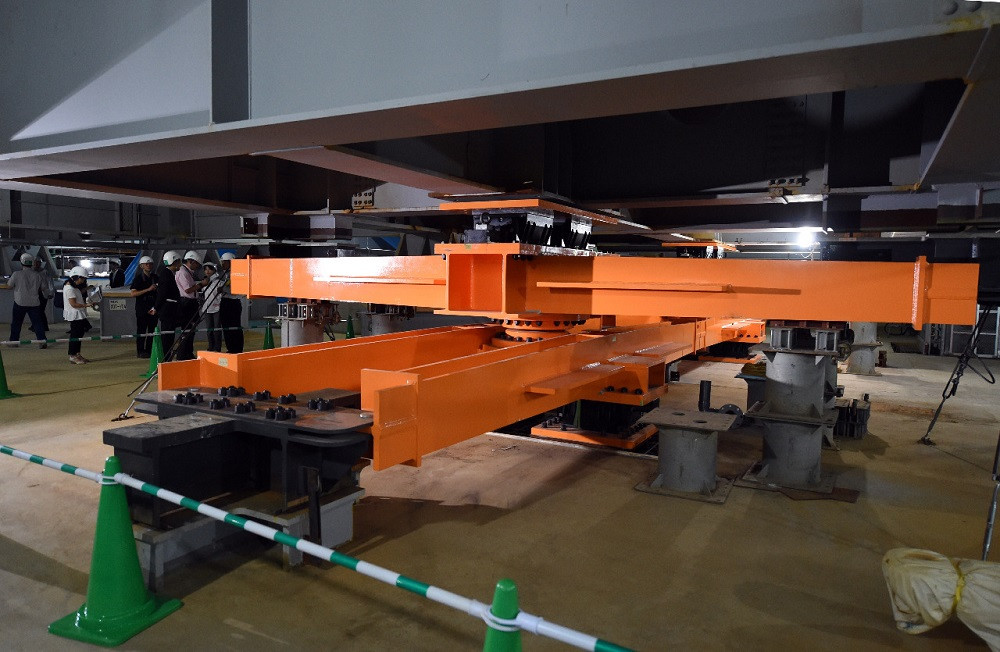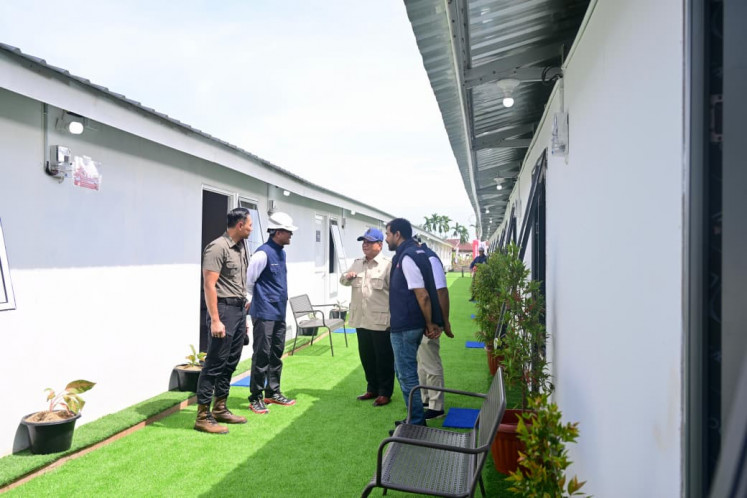Popular Reads
Top Results
Can't find what you're looking for?
View all search resultsPopular Reads
Top Results
Can't find what you're looking for?
View all search resultsHousing: A matter of life and death in disaster
In the last decade, at least 7,300 people died and 55 million people displaced when their homes were destroyed by these disasters in Indonesia. Around 4,000 of the deaths were from the 2018 Central Sulawesi earthquake, when many were buried under their own homes.
Change text size
Gift Premium Articles
to Anyone
T
he COVID-19 pandemic shows the vital role of housing policy: Everyone needs a safe and healthy home, especially now that most people work from home and physical contact is kept to a minimum. Hygienic practices are also key to prevent transmission and everyone needs to have access to clean water and a good sanitation system.
When natural hazard-induced disasters happen, such as earthquakes or typhoons, losses would significantly concentrate in the housing sector.
In the last decade, at least 7,300 people died and 55 million people displaced when their homes were destroyed by these disasters in Indonesia. Around 4,000 of the deaths were from the 2018 Central Sulawesi earthquake, when many were buried under their own homes.
Worldwide, between 40 and 90 percent of damages to private property were concentrated in housing since 2000, according to the Post-Disaster Needs Assessment by the World Bank.
A large-scale natural disaster during the current pandemic, when most people are likely to be at home, can be devastating to property and lives.
A house is more than a shelter. For poor people, it is the most important and perhaps the only asset they have. It’s also their workplace or used as loan collateral. Millions of people have already lost their job during the pandemic; they can hardly afford to lose their homes, too.
Indonesia is prone to various natural hazards that are often followed by destruction. Natural hazards do not have to be a disaster if we prepare ourselves well. In many cases, it was not the earthquake or typhoons that killed people; poorly constructed housings did.
Over the years and after many tragic disasters, the government’s housing policies have evolved toward a mitigation rather than recovery mindset through various housing subsidy programs coupled with quality compliance.
Unfortunately, many subsidized houses still do not meet disaster-resistant standards.
Post-disaster reconstruction programs, for instance, often do not involve measures that would thwart the impact of future events. Many rebuilt or repaired houses were substandard.
The government’s reconstruction subsidy budget, quality-based control mechanism and technical assistance were inadequate, which has led to the reproduction of houses that do not conform to safety building codes. Many are even built in the same hazard-prone areas as before.
This noncompliance is also found in the regular national housing program. In the rush to clear the huge backlog in the country’s housing supply, the government is going for quantity rather than quality. Besides insufficient subsidies and technical guidance that does not fully consider materials diversity and availability between regions, recipients often use the assistance to expand their house or add aesthetic elements rather than improve structural components.
Poor awareness and understanding of disaster risks play a role in the way communities perceive risks and make decisions to invest in the safety aspect of their houses.
The government’s housing program fails to emphasize the disaster prevention agenda. Selecting housing areas, for example, is not always based on hazard risk mapping. Since a land title is mandatory to qualify for the housing improvement subsidy program, the government is excluding the poor in slum areas and informal settlements.
The current pandemic should be a moment to contemplate the life and death role that the housing sector plays. Post-disaster reconstruction programs should aim to empower people to rebuild safer houses, rather than simply providing them with any housing.
We should invest in increasing people’s knowledge and capacity to build their own disaster-resistant houses as opposed to giving out finished products. Smarter spatial planning needs to be integrated as well to avoid putting people back into hazard-prone areas.
The national housing subsidy program should continue to integrate resilience components, such as stricter quality-based disbursement mechanisms and more comprehensive hazard-based spatial planning, coupled with property regularization.
We need to reform the housing construction supply chain, including by updating building regulations, such as house retrofitting codes and monitoring systems, followed by the integration with appropriate access to financing through government programs and various home improvement credit or disaster insurance by the private sector.
Additionally, a massive public campaign on disaster risk knowledge is needed, in and out the education system that encourages communities to transform their awareness into action and strengthen their houses with accessible resources. Thus, everyone would not only have the opportunity but also demand to strengthen their homes.
Many housing policymakers around the world often still get trapped around the classic paradigm that providing new houses is better than strengthening existing ones. The Indonesian government, fortunately, is not one of them.
However, we need to act faster but diligently, for natural hazards would not wait until we are ready, knowing that progress that took years to build can be destroyed within minutes.
Don’t just seek to build back better, but more importantly, aim to build better before the next disaster.
***
Architect and disaster risk reduction practitioner who studies at Cornell University, the United States










